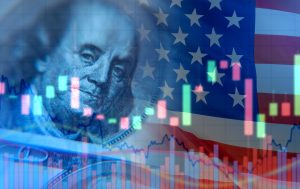The financial markets saw significant action this week (August 6-8, 2025), driven by a pivotal Bank of England (BOE) decision and former President Trump’s latest tariff moves. These events, combined with ongoing US economic concerns, created notable shifts across currency markets.
BOE’s “Hawkish” Rate Cut
On August 7, the Bank of England cut its Bank Rate by 25 basis points to 4.00%. While widely anticipated, this wasn’t a straightforward move. The decision was a narrow 5-4 vote, and Governor Andrew Bailey’s cautious remarks about persistent inflation risks led markets to interpret it as a “hawkish cut.” This nuance limited the British Pound’s (GBP/USD) typical post-cut decline, allowing it to show unexpected resilience and even rally. This highlights how central bank communication can be as impactful as the rate decision itself.
Trump’s Sweeping Semiconductor Tariffs
On August 6, President Trump announced a significant 100% tariff on foreign-made semiconductors. This aggressive policy aims to compel chip production to return to the US, with exemptions for companies already investing in American facilities (like TSMC, Samsung, and Nvidia). This tariff is part of a broader series of reciprocal tariffs that took effect on August 1 and 7 across numerous countries, including a 25% tariff on India with an additional penalty for Russian oil purchases. These measures are projected to increase consumer prices and disrupt global supply chains, adding to economic uncertainty.
FX Market Reactions
- US Dollar (DXY): The DXY continued its weakening trend, primarily due to growing expectations for Federal Reserve rate cuts. Softer US labor data and the economic implications of the new tariffs fueled this dovish outlook for the Fed.
- Gold (XAU/USD): Benefited significantly from the weaker dollar and increased rate cut bets, showing strong bullish momentum.
- EUR/USD: Experienced some upward movement as the dollar weakened, though underlying Eurozone economic concerns kept a lid on major gains.
- GBP/USD: Defied expectations by showing resilience and even rallying after the BOE’s rate cut, thanks to the “hawkish” interpretation of the central bank’s statement.
What’s Next?
The interplay of diverging central bank policies, escalating trade protectionism, and persistent geopolitical risks suggests continued volatility in FX markets. Investors should closely monitor upcoming US labor and inflation data, as well as the full economic ramifications of the new tariff regime.
Stay informed with JDR Securities for expert insights into these dynamic markets!
MarketUpdate #Forex #USD #DXY #BOE #Tariffs #Semiconductors #EURUSD #GBPUSD #XAUUSD #Gold #Trading #JDRSecurities #FinancialMarkets #Economy #TradePolicy #CentralBanks



